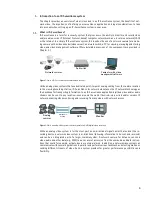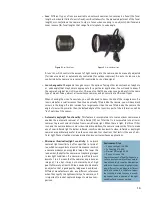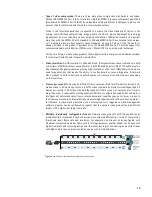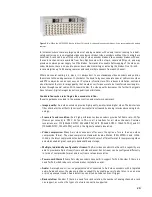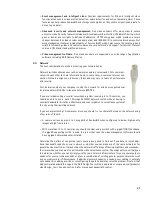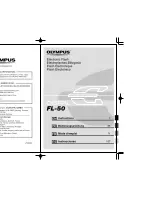
10
Component considerations
This chapter describes the major components of an IP-Surveillance system, and provides guidelines for
selecting equipment. The components covered in this chapter include network camera, video encoder,
network switch, server hardware and video management software (AXIS Camera Station).
Network camera
A network camera can be described as a camera and computer combined in one unit. It has a compres-
sion chip, an operating system, a built-in web server, FTP (File Transfer Protocol) server, FTP client, e-mail
client, alarm management and much more. A network camera, unlike a web camera, does not need to be
attached to a PC; it operates independently and connects, as with a PC, directly to an IP network. It can
be placed wherever there is a wired or wireless network connection. The network camera captures and
sends live images, enabling authorized users to locally or remotely view, store and manage video over a
standard IP-based network infrastructure.
Figure 2.1.a.
Inside an Axis network camera
Figure 2.1.b.
Back of an Axis network camera
Many types of network cameras are available today, and no matter what your needs are, there is a net-
work camera available to meet them. Although analog cameras are available in a similar variety, network
cameras can now offer more benefits, including better image quality and greater installation flexibility.
For some special applications, such as very high image resolution or wireless needs, network cameras are
the only option.
The following sections provide an overview of the types of network cameras available, the network
camera features to consider and how to select a network camera.
a) Types of network cameras
Axis offers the widest range of professional network cameras on the market. Network cameras can
be categorized into indoor/outdoor versions and types.
>
Indoor or outdoor.
Outdoor network cameras must
have an auto iris lens to regulate how much light is
received. Many outdoor cameras require a protective
housing. Others may already be designed with a
protective enclosure. Housings are also available for
indoor cameras that require protection from harsh environments such as dust and humidity, and
from vandalism or tampering.
>
Types:
Fixed, fixed dome, PTZ (pan/tilt/zoom) or PTZ dome
2.
2.1.
CPU
Image
Processor
Compression
Flash
Memory
DRAM
Ethernet
Interface
Image
Sensor
Lens
Optical Filter
Power connector
DC-Iris
control cable
I/O terminal
connector
RJ-45 Ethernet network connector
(and Power over Ethernet depending on model)
Summary of Contents for IP-Surveillance system
Page 49: ...49 ...



